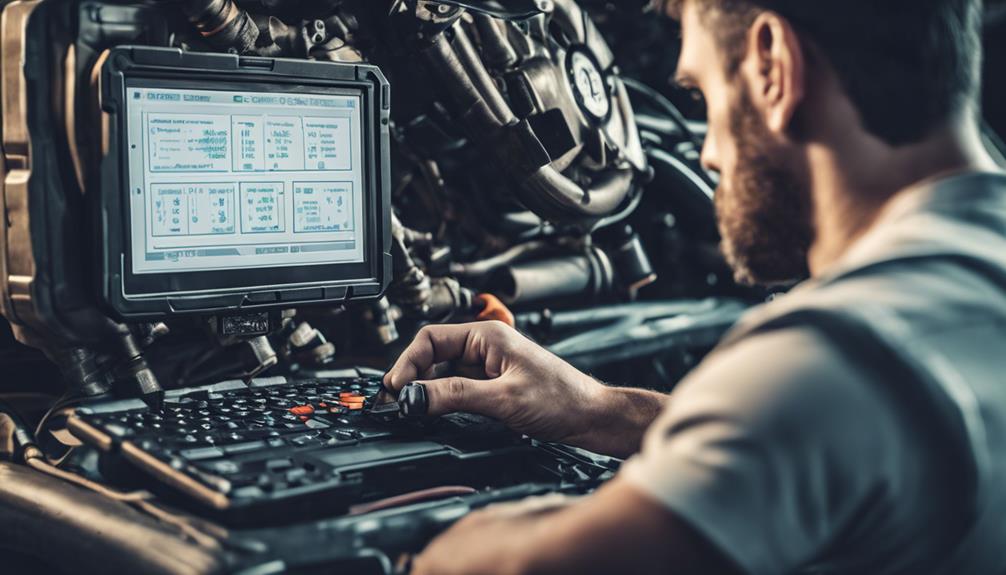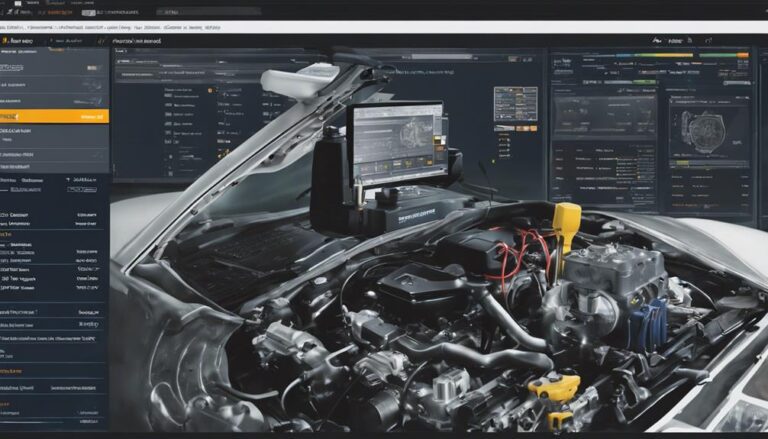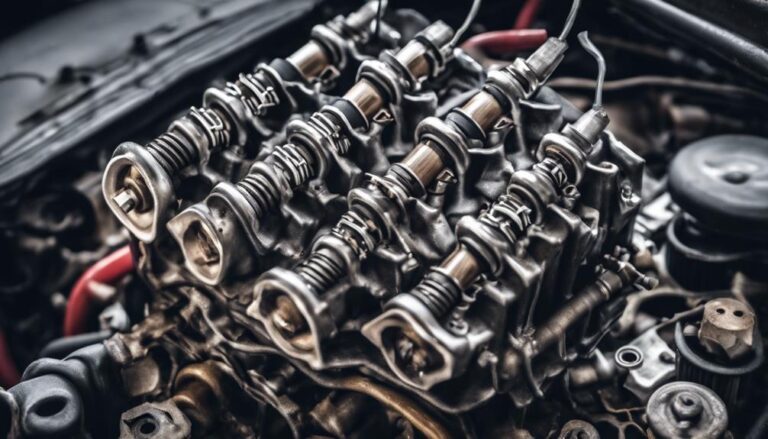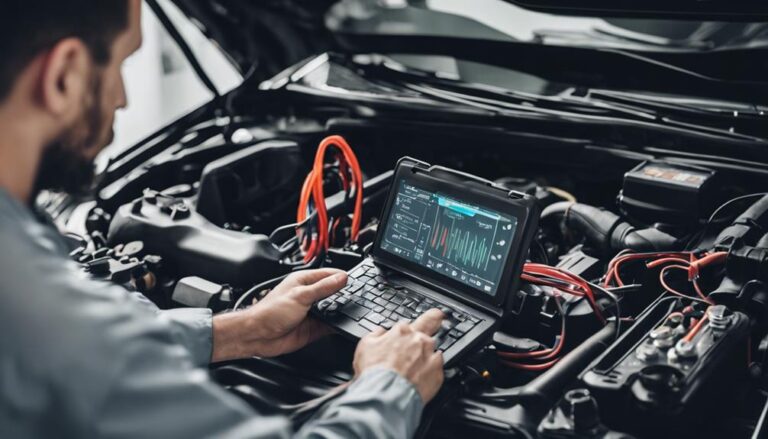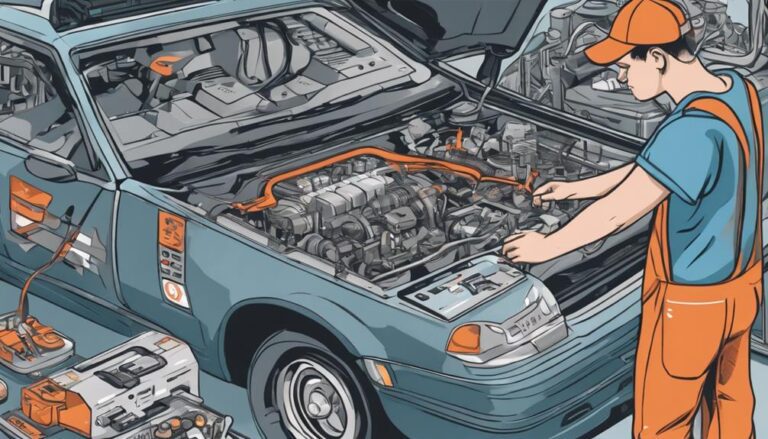What Do Engine Diagnostic Codes Mean?
When peering into the puzzle of engine diagnostic codes, ponder the perplexing precision of these alphanumeric sequences.
You've seen the light on your dashboard flicker into existence, alerting you to an issue.
But what do these codes truly reveal about your vehicle's health?
Unraveling the mysteries behind these codes could be the key to unlocking hidden problems and saving you from costly repairs.
So, next time your engine light blinks, remember, those codes hold the secrets to your vehicle's well-being.
Key Takeaways
- OBD-II codes pinpoint specific engine issues accurately.
- Promptly addressing diagnostic trouble codes prevents further damage.
- Proper interpretation of codes aids in effective troubleshooting.
- Understanding engine diagnostic codes ensures optimal performance and cost-effective maintenance.
Common Engine Diagnostic Trouble Codes
If you're encountering issues with your vehicle's engine performance, understanding common engine diagnostic trouble codes is crucial in pinpointing the root cause efficiently. Troubleshooting engine performance becomes more manageable when you grasp the diagnostic code meanings associated with various issues.
For instance, the P0300 code indicates random cylinder misfires, directly impacting your engine's overall performance. On the other hand, codes like P0420 and P0430 point towards catalytic converter inefficiency, affecting emissions control systems.
Understanding codes such as P0440, P0455, and P0442 can help you identify evaporative emission system leaks that might be impacting your fuel efficiency. Moreover, codes like P0171, P0174, P0172, and P0175 are crucial as they highlight fuel system issues that can cause significant performance problems.
Familiarizing yourself with codes like P0411, P0401, and P0455 is essential to recognize emission control system malfunctions that can affect environmental compliance. By decoding these diagnostic trouble codes, you empower yourself to address engine issues promptly and effectively.
Understanding OBD-II Code Interpretation
Understanding the interpretation of OBD-II codes is essential for accurately diagnosing issues within your vehicle's components or systems. When decoding these codes, keep in mind the following to navigate the diagnostic process effectively:
- Code breakdown: OBD-II codes consist of a letter indicating the system and numbers specifying the issue. This breakdown helps pinpoint the exact problem within your vehicle.
- Standardization: OBD-II codes are standardized across all vehicles since 1996, making interpretation easier. This uniformity streamlines the diagnostic process for mechanics and car owners alike.
- Specificity: Each OBD-II code corresponds to a specific problem within the vehicle's components or systems. Understanding this specificity is crucial for accurate troubleshooting.
- Accuracy: Proper interpretation of OBD-II codes is essential for effective troubleshooting and timely repairs. By interpreting the codes correctly, you can address issues promptly and prevent further damage to your vehicle.
Deciphering Common DTCs
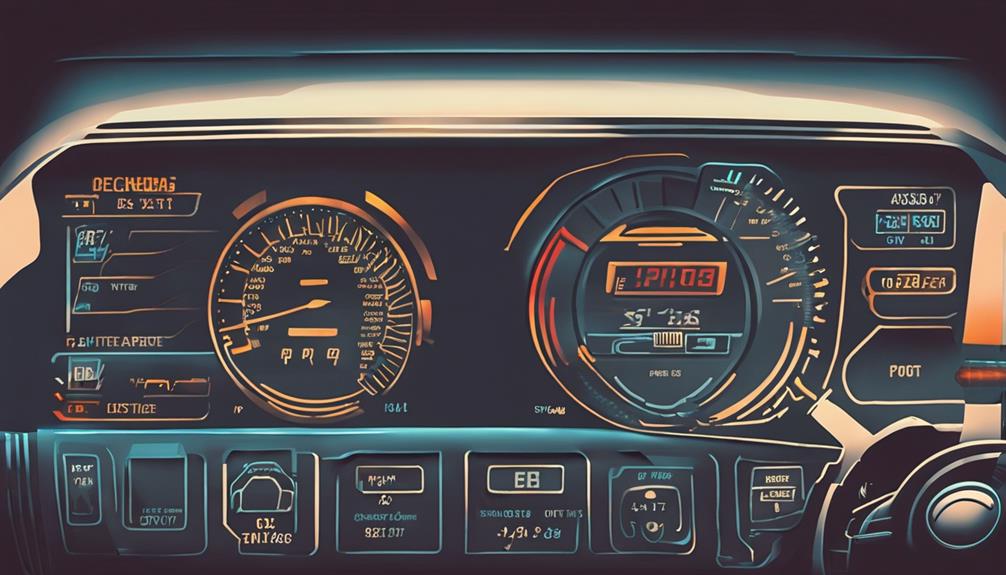
Decipher common DTCs by analyzing their specific codes and corresponding issues within your vehicle's systems. When troubleshooting engine problems, understanding Diagnostic Trouble Codes (DTCs) is crucial. Here's a breakdown of some common DTCs and their meanings:
| DTC | Description |
|---|---|
| P0300 | Random cylinder misfire |
| P0301 | Cylinder 1 misfire |
| P0420 | Catalytic converter inefficiency |
| P0430 | Catalytic converter inefficiency |
| P0440 | Evaporative emission system leak |
| P0455 | Evaporative emission system leak |
| P0442 | Evaporative emission system leak |
| P0171 | Lean fuel mixture |
| P0174 | Lean fuel mixture |
| P0172 | Rich fuel mixture |
| P0175 | Rich fuel mixture |
| P0411 | Emission control system issue |
| P0401 | Emission control system issue |
| P0455 | Emission control system issue |
Utilize diagnostic tools evolution to pinpoint the exact issue and follow specific troubleshooting techniques to resolve these DTCs efficiently.
Significance of Engine Diagnostic Codes
Engine diagnostic codes play a vital role in promptly identifying specific malfunctions within your vehicle's engine system. Understanding the diagnostic code meanings and troubleshooting based on them is crucial for efficient maintenance and repair. Here's why interpreting these codes is so important:
- Prevention of Further Damage: By addressing engine diagnostic codes promptly, you can prevent minor issues from escalating into more severe problems, saving you time and money in the long run.
- Efficient Problem Solving: Knowing how to interpret these codes allows you to troubleshoot effectively, pinpointing the exact issue and addressing it swiftly to keep your vehicle running smoothly.
- Optimal Performance: Ignoring engine diagnostic codes can lead to decreased performance and potential safety hazards. Addressing these codes promptly helps maintain your vehicle's optimal performance and safety standards.
- Cost-Effective Maintenance: Timely attention to engine diagnostic codes can prevent costly repairs by catching problems early on, making maintenance more affordable and manageable.
Interpreting Vehicle Error Messages
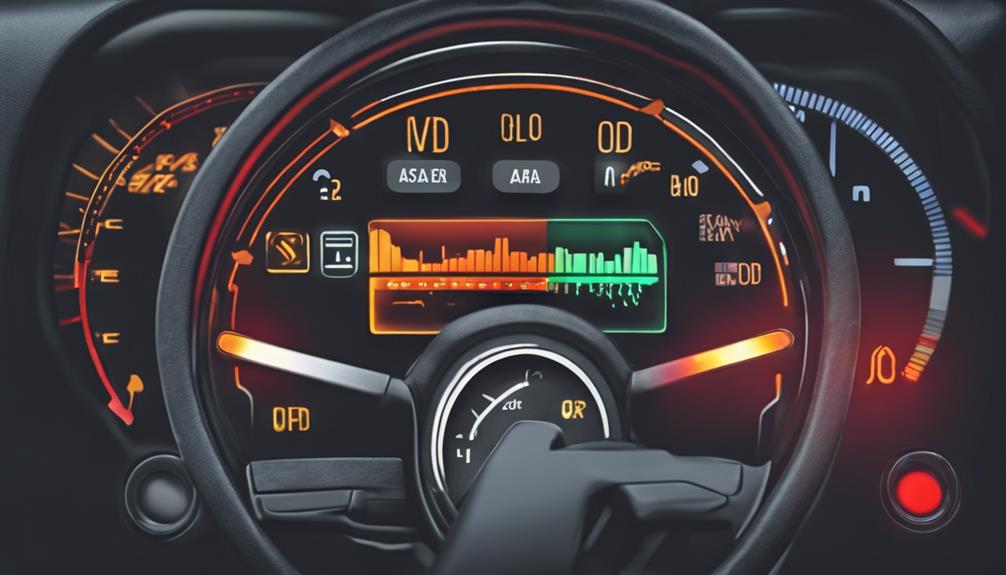
To effectively address vehicle error messages, it's essential to grasp the significance of Diagnostic Trouble Codes (DTCs) and how they provide specific details about engine malfunctions. DTCs are standardized codes that assist technicians in quickly and accurately pinpointing issues within the vehicle. These codes consist of a letter indicating the system followed by numbers detailing the specific problem. Understanding DTCs is crucial as it can save time and money on repairs by addressing the root cause of the problems efficiently. Interpreting DTCs necessitates the use of an OBD scanner to access the codes stored in the vehicle's computer system.
When troubleshooting vehicle error messages, remember that proper error code analysis is key. Utilize the DTCs displayed by the scanner to identify the exact issue affecting your engine. Once you have the specific DTC, research its meaning and potential solutions to address the problem effectively. By following these troubleshooting tips and delving into error code analysis, you can confidently tackle engine malfunctions and ensure your vehicle runs smoothly.
Frequently Asked Questions
How Do You Interpret Car Diagnostic Codes?
To interpret car diagnostic codes, you need a scanner. Connect it to your car's OBD port. The scanner reads codes indicating issues. Look up codes online. Understand implications and potential fixes. This aids in troubleshooting and resolving problems effectively.
What Is the Most Common Check Engine Code?
The most common check engine code, P0420, often signals a failing catalytic converter. Ignoring it may harm your engine and lead to higher emissions. Timely repair is crucial to prevent costly fixes and keep your vehicle running smoothly.
What Are the Different Engine Codes?
When deciphering different engine codes, OBD-II interpretation is key. Understand trouble code meanings for accurate diagnostics. Be the engine whisperer, decoding the mysteries of your vehicle's health with precision and confidence.
What Are Engine Diagnostic Test Codes?
When dealing with engine diagnostic test codes, you must grasp their significance for efficient troubleshooting and repairs. By using an OBD scanner, you can swiftly identify issues, enabling timely maintenance and preventing further damage.
Conclusion
In the intricate web of vehicle diagnostics, engine diagnostic codes act as the guiding light, illuminating the path to efficient repairs.
Like a mechanic's toolbox filled with precision instruments, these codes are the key to unlocking the mysteries within your vehicle's systems.
Embrace the knowledge they provide, for they're the map to a smoother ride on the road of maintenance and care.

